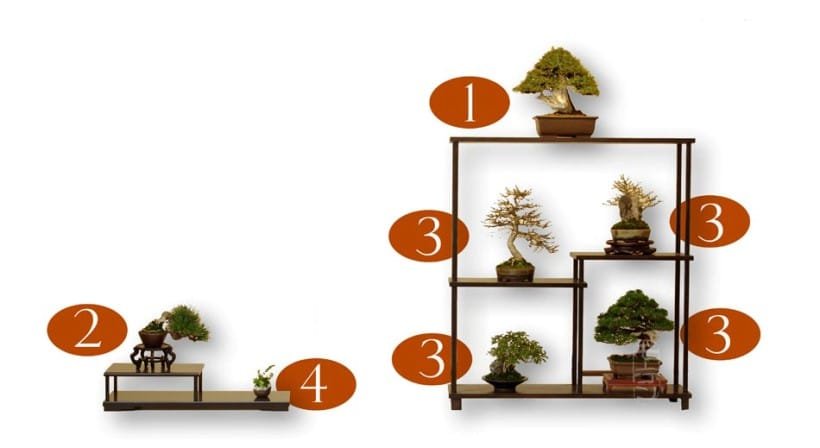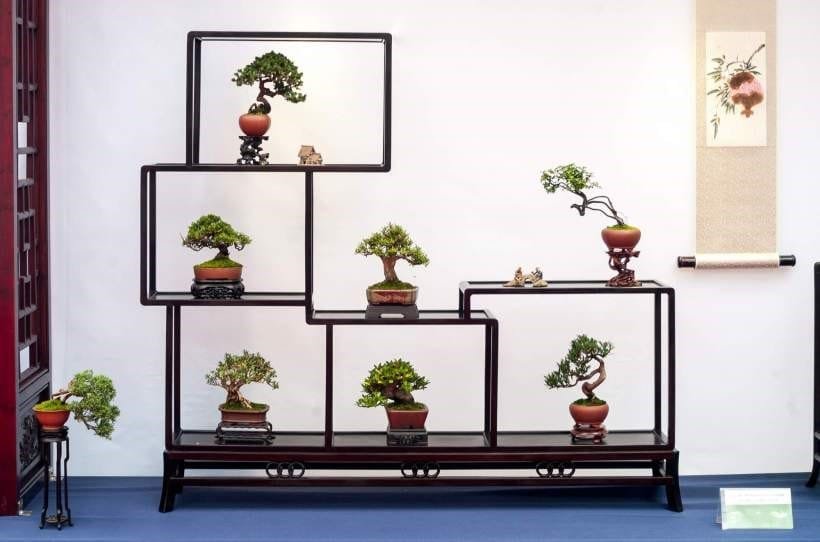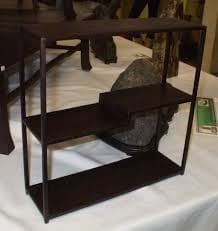Modesty is a primary element in acquiring an impressive display with the appropriate interpretation of conformity and peace. Equity, distinction, and imperceptible lines are terms to put in mind if arranging a display.
Featuring the Shohin-bonsai, embellishments may be added to stretch the interpretation and artistry of the display. It is important to be knowledgeable about the key rules of Japanese in terms of bonsai display in order to completely comprehend the manner of setup and acknowledge how it delivers. There is a number of modern arts that can be entirely improper in the display of bonsai, disregarding their prompt magnificence and delicacy.
Westerners have attempted to utilize these items but only to find out that they could not last long. These items simply do not have the sense of nature, the artistic value, or the modesty and charm recognized in the art of bonsai.
Because of the minimal size of Shohin, its display is a little unique from the common tokonoma display that commonly draws in a single tree, a scroll, and an accent plant. With Shohin display, the two trees are facing each other from reversed ends of the display while the scroll and the accent plant are put in their center.

Image Credit: Shohin Bonsai Europe
The Components
Aside from adjusting the various components in a Shohin-bonsai display, other artistry considerations are also to be well thought. Bonsai itself suggests a story and recommends an idea which can be stretched by making use of proper aides to the tree.
Overall, the bonsai, the manner it is assembled, and the components used shall recommend at atmosphere and a particular feature to the spectator.
Check out this video to learn on elements that are used for traditional bonsai display:
Components used in the display must be organic materials. Modern materials will impact the picture in a pessimistic manner, getting the concentration far from the nature. The objective of the components is to improve the image and not to antecede. This implies that one must cautiously select the correct embellishments to make sure that they integrate with the entire set up, with the trees as the primary objects.

Image Credit: Shohin Bonsai Europe
Using stands to display Shohin-bonsai
Shohin-bonsai is commonly displayed with the use of a stand. The function of the stand is to serve as a pot extension and elevate the tree to a more precise and distinguished arrangement. It contributes to grace and eminence.
Stands for every tree must balance the tree. For instance, extremely low stands can be used for tall trees, same goes that extremely tall stands can be used for short, thin yamadori juniper where the stand height can hoist the tree in order for the delicate details of the tree be seen and appreciated.
Now and again, stands turn accessible in the market like auctions and sales. The qualification for an ideal stand is a neat and straightforward layout and, if obtainable in an affordable price, must be bought.
Stands are feasible in different varieties. There are kinds of stands that are able to hold various numbers of Shohin. Stands are outlined to carry both equal and odd numbers of trees – holding up to seven trees, and various Shohin sizes.
It is completely adequate to use break-even numbers of components in a display – although we know that odd numbers are commonly used.
Very straightforward stands may be built from short portions of accessible hardwood. Slabs may be used; however, they must be slim in order not to overshadow the tree. You may use three boards in an alternate arrangement and it is specifically favorable for a very huge pot.

Image Credit: WordPress.com
Convention in setting up Shohin with a stand
If the Shohin-bonsai is formally styled, then the stand must be informal style too. Same goes that if the bonsai is informally styled, then the stand must be styled informally. With this, you must know that straight lines are much formal compared to curves. The tall stand is much formal compared to a short stand.
Stands in dark color are more formal compared to those in a light color. Stands that have legs are much preferred for formal style compared to mats or slabs.
The color of the stand must not be the same as the pot, however, it must ensure balance. Overall, stands are in dark colors. Being dark in color, the stand does not point up to itself.
Dark woods like mahogany and rosewood are ideal for conifers; a kind of flowering tree can be illustrated with wood in lighter color. However, if the stand is excessively light in color, it can instantly catch attention, compared to the tree.
Customarily, stands are built from wood. The kind of wood is something to be considered if selecting a stand. Certain wood possesses a busy grain arrangement and may dampen from the architecture.

Image Credit: The Art of Bonsai Project
Common elevation should not be a concern
As wrongly perceived, the setup of trees through a display does not focus on the common elevation of the trees such as they grow in essence. It must be given high regard; however, in the display of Shohin, there is commonly a bigger acknowledgment of setting up more candidly compared to the classical display of Tokonoma.

Image Credit: Pinterest
Ward off from duplicating components
Concentrate on what balances each other. In a Shohin display where the levels are more than one, the items’ elevation has something to do with the pattern of the trees based on each other. The shape and motion determine the manner of placing the trees.
If a Japanese display usually exhibits a conifer above the rack, this is because it has something to do with the culture and interpretation of the trees, and not on where it flourishes in nature.
Image credit: Valavanis Bonsai Blog
The stand improves the look of Shohin-bonsai; arranges it as a piece to be cherished and recognized.
Nevertheless, the stand must not overshadow the display. The Shohin-bonsai must be the primary highlight and the stand must balance with it. A stand that seems too detailed may draw away from the tree.
The stand must be selected to balance the tree and the pot together instead of just the tree. If you take a look in a Shohin-display, question yourself: “Am I using the right stand?”


